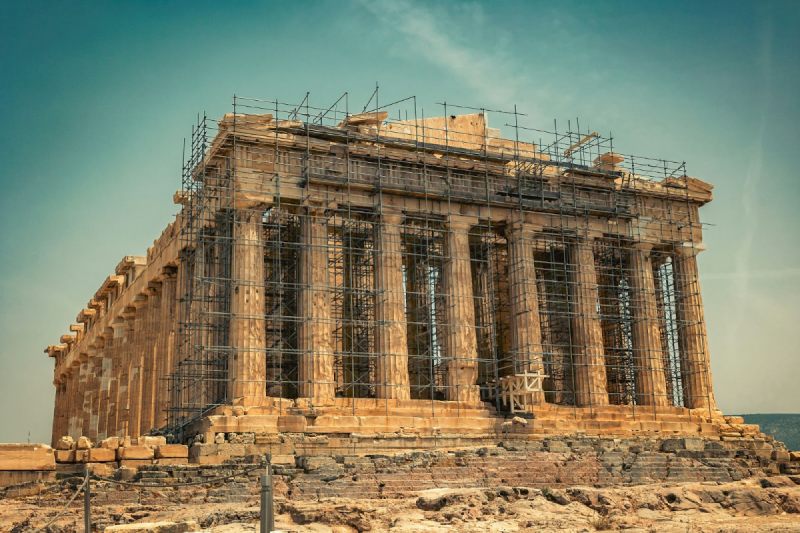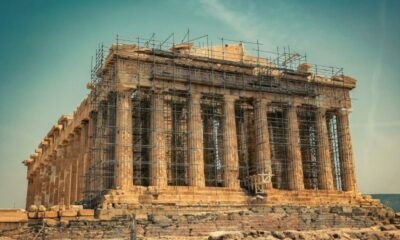Real Estate
Richard Koenigsberg: Preserving the Past Through Historic Restorations

Historic restoration is more than just preserving old buildings—it’s about protecting cultural identity, breathing life back into timeworn spaces, and connecting communities to their past. Whether it’s a forgotten neighborhood being revitalized or a historic landmark reimagined for public use, Richard Koenigsberg says that restoration projects hold transformative potential.
They require thorough research, skilled labor, and community support, and often face challenges ranging from strict regulations to financial constraints. Still, the rewards of preserved craftsmanship, renewed civic pride, and environmentally conscious development make the process worth pursuing.
Historic Restorations
Unlike renovations, which update or modernize a space, or preservation, which stabilizes a structure to prevent further decay, restorations bring back the look and feel of a particular historical moment. Projects often include heritage homes, government buildings, and sites with architectural or cultural significance. Even small details like original light fixtures or hand-carved moldings are often replicated to maintain authenticity.
A Victorian-era townhouse in Boston, restored with hand-milled woodwork and original paint colors, reflects this process. So does a century-old schoolhouse in a rural town, revived as a community center while keeping its original floorboards and chalkboards intact.
Cultural and Educational Value
Restoring historic spaces helps communities stay connected to their roots. These projects keep the stories of past generations alive, reminding people where they came from and how their surroundings changed. A restored train station or courthouse can become a powerful symbol of civic identity, anchoring a town’s narrative.
Beyond cultural pride, restored sites often serve as living classrooms. Students touring a preserved battlefield or a restored 19th-century home gain a tangible sense of history that textbooks alone can’t offer. These encounters create lasting impressions and foster a deeper appreciation for heritage. Teachers often build entire lesson plans around these experiences, enhancing the learning process.
In cities like Charleston or New Orleans, restored neighborhoods also preserve architectural styles not found in modern construction. Walking through cobbled streets lined with gas lamps and wrought iron balconies becomes an immersive way to learn about craftsmanship and urban development. The unique atmosphere of these districts draws artists, historians, and travelers alike.
How the Restoration Process Works
Bringing a historic structure back to life starts with research. Historians, architects, and conservators dig through archives, photographs, and oral histories to ensure every detail aligns with the chosen time period. This groundwork shapes the rest of the project and often uncovers forgotten stories or design elements that influence the final plan.
The physical work often involves sourcing materials that match the original—whether it’s hand-pressed bricks, lime-based plaster, or reclaimed wood. Techniques used in the past, such as traditional joinery or decorative plasterwork, are revived to maintain integrity. Skilled artisans are often brought in to recreate intricate elements like stained glass or ornate ceiling medallions.
Strict guidelines often govern these projects, especially when the site is on a historic register. Meeting those standards while navigating modern building codes requires careful planning and expert knowledge. The result, when done well, is a seamless blend of history and functionality.
Common Obstacles and Considerations
Restoring historic structures is rarely straightforward. One of the biggest challenges is sourcing materials that align with the original build. Items like hand-forged nails or custom window panes aren’t readily available, often requiring specialized craftsmen or salvaged components. This can lead to delays and higher costs, especially for rare architectural details.
Balancing historical accuracy with modern safety codes can be tricky. Fire suppression systems, accessibility requirements, and structural reinforcements must be added without compromising the building’s original character. This delicate negotiation between past and present takes creativity and technical expertise. In some cases, compromises must be made to preserve as much authenticity as possible.
Funding limitations also pose a significant hurdle. Restoration can be expensive, and many projects rely on a mix of public grants, private donations, and volunteer labor. Without sustained support, buildings may fall into disrepair again, despite initial efforts.
Community and Economic Impact
When a historic building is brought back to life, it can spark a ripple effect throughout a neighborhood. Revitalized spaces often attract small businesses, increase property values, and breathe new life into once-neglected districts. A restored theater or train depot can become a local landmark, drawing both residents and tourists.
These projects also strengthen social ties. When a community rallies around saving a historic church or schoolhouse, it fosters shared pride and connection. Events, tours, and educational programs hosted in restored spaces deepen that sense of unity. In many towns, such buildings become gathering spots for festivals, markets, and celebrations.
Getting Involved and Supporting Efforts
There are many ways to contribute to historic restoration efforts, from hands-on volunteer work to attending fundraisers or advocacy meetings. Even spreading awareness about local landmarks at risk can make a difference. Sharing stories, photos, or memories of historic places can inspire broader interest and support.
Organizations like local preservation societies, historical commissions, and nonprofit groups often lead these initiatives. They provide resources, host workshops, and offer opportunities for residents to learn skills like masonry repair or archival research. Some even offer tax incentives or grants for eligible property owners.
-
Business4 weeks ago
Italian Billionaire Raffaello Follieri Strengthens Global Energy & Logistics Empire with €140 Million Investment in Pasele Shipping
-

 Business4 weeks ago
Business4 weeks agoEric Wippman on Why Architects Should Get Involved in Local Community Projects
-

 Entertainment4 weeks ago
Entertainment4 weeks agoNazanin Hamedani – Iranian Artist, Influencer, Dancer & Music Creator Inspiring a New Generation
-

 Health4 weeks ago
Health4 weeks agoAyurveda in the Modern World: Blending Tradition with Science
-

 Tech3 weeks ago
Tech3 weeks agoYouTube Expands AI Tools with Veo 3 and Edit with AI Features
-

 Science3 weeks ago
Science3 weeks agoThings You Should Need to Know about Solar Eclipse September 2025
-

 Health3 weeks ago
Health3 weeks agoHow to beat ATS in its own game with a solid nurse resume
-

 Cryptocurrency2 weeks ago
Cryptocurrency2 weeks agoYolo247 Becomes First Crypto Casino Platform to Launch Kingmidas Games













